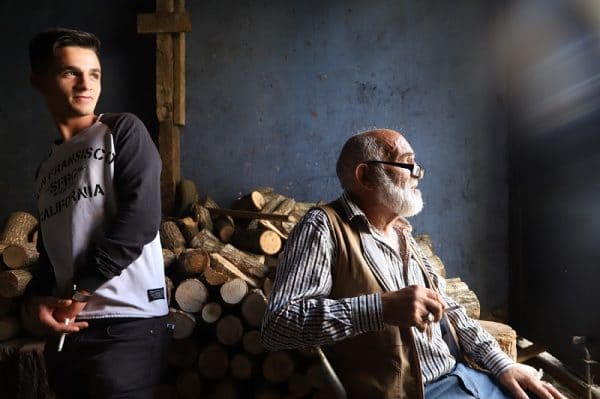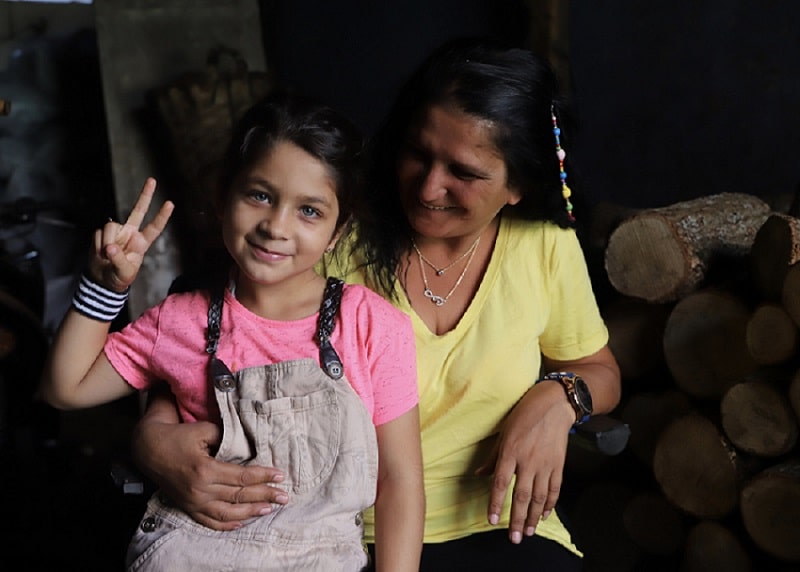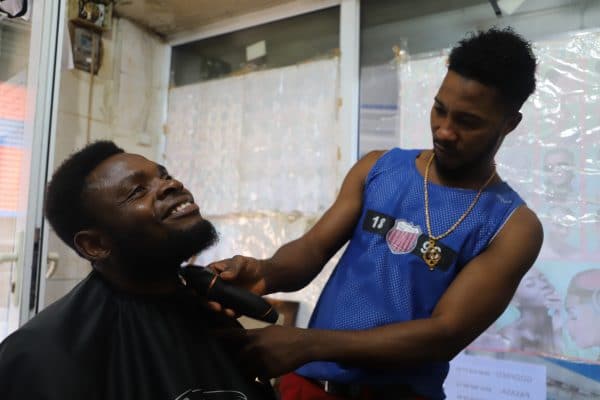If certain streets divide minds as much as men, few are more divisive than Istanbul’s Tarlabaşı Boulevard. Like the périphérique of Paris, the Green Line in Beirut, or Delmar Boulevard in St. Louis, the boulevard cordons off history’s winners from her losers, the potentates from the powerless, the living from the dead. Though untrue, this last moniker sticks in the minds of most Istanbullus, as the city’s inhabitants are known. To cross Tarlabaşı Boulevard is to enter the Dark Side — not merely an iniquitous den of drugs, crime, and prostitution, but the last refuge of every misfit in Asia Minor. Even Google Maps, legitimator of mental geography, enters not.
Whether gypsies, transvestites, Kurdish or Syrian refugees, Ghanaians, or Western gonzos, the neighborhood of Tarlabaşı — colorful, crumbling, Kurdish, incandescent, faintly Christian, and iconoclastic — represents everything the Turkish Republic and rising Istanbul — pious, orderly, patriotic, and prosperous — do not.
Contrast this with the right side of the boulevard, old Beyoğlu, the city’s fabled European quarter in much of its late Ottoman majesty. From historic Taksim Square, mantelpiece of the republic, to Istiklal Avenue, the most renowned pedestrian thoroughfare between La Rambla and Lan Kwai Fong, old Beyoğlu is a stunning if stinging reminder of Istanbul’s perpetually confused state: a spectacular blend of belle époque and brutalism, kitsch and neoclassical, Victorian and art nouveau.
History has been much less forgiving to the other side of the street. Once the residential counterpart to Beyoğlu’s commercial, artistic, and intellectual heart, for a century, from the 1870s to the 1960s, Tarlabaşı was home to the city’s avant-garde — the writers, actors, singers, servers, musicians, publishers, poets, and pastry-chefs of belle époque Constantinople — not to mention one of the capital’s most vibrant non-Muslim communities.
Synonymous with prosperous working- and middle-class Greeks (“Rum” as they are still known in Turkish, i.e. Byzantine Romans), Armenians, Jews, Assyrians, and Levantines[1], Tarlabaşı was riven apart by four demographic transformations, i.e. man-made disasters, in the 20th century: dispossession, pogroms, civil war, and short-sighted urban planning. Ever loyal to the zeitgeist, most of the quarter has now been branded for slum clearance. Since these, however, are the building blocks of the contemporary urban Turkish experience, if one neighborhood tells the story of Turkey’s tumultuous tryst with modernity — and the fiction festering at the heart of its republican narrative — it is Tarlabaşı.
Sharing is caring
Nowhere else do contemporary Istanbul’s two defining stories come so clearly into focus: first, the destruction of its non-Muslim population, which made up 56% of the Ottoman capital’s in 1900; and second, the arrival of millions of Muslim Anatolians in search of a better life from the 1950s onward. As the object of the Turkish Republic’s most ambitious social engineering efforts — the 1923 population exchange, the 1942 Wealth Tax, the 1955 Pogroms, the 1964 Citizenship Law, the 1985 construction of Tarlabaşı Boulevard, and the 2005 Urban Renewal Law — its very existence embodies the success of Turkish society, and the failure of the Turkish state.
This survival is predicated upon two things: first, the resilience of Istanbul’s working people, be they Turkish, Kurdish, Arab, West African, Caucasian, Persian, or Pashtun. Crumbling hovel though it may be, Tarlabaşı has been Turkey’s most famous refuge for the past 40 years, the wharf from which tens of thousands from Eurasia and Africa grasp at the elusive promise of a better life.
Second is that special Turkish genius for hospitality. Perfected across much of Istanbul, if the story of 20th century Istanbul is the expulsion of its centuries-old Christian and Jewish communities to make way for Muslim Anatolian peasants, Turkey’s untold story, both Ottoman and Republican, is its embrace of millions of refugees fleeing the Balkans, Crimea, Caucasus, and eastern Mediterranean since the 18th century.
A place to call home
To be sure, this tradition goes back even further, be it Iberian Jews fleeing the Inquisition or Swedes and Poles the wrath of the Romanovs. The coffee and magical meatballs that Charles XII made into staples of every Swedish exertion? Recipes pinched from his five-year exile in the Ottoman Empire. Not for nothing did Adam Mickiewicz, Poland’s national poet, perish in Tarlabaşı while trying to rally his countrymen against the Russians during the Crimean War.
Nor did Turkish hospitality restrict itself to the citizens of allied nations. Despite being Turkey’s sworn enemy for 300 years, it was to Istanbul that 200,000 White Russians first fled the Bolshevik Revolution, including Vladimir Nabokov and the niece of Leo Tolstoy. And despite having been Germany’s ally in WWI and a strong German sympathizer throughout WWII, it was to Turkey that large numbers of German Jewish and antifascist intellectuals fled in the 1930s, many of which settled in Tarlabaşı[2].
This trend has hardly let up in our own day. In the past four decades alone, Turkey has given safe passage to two million Iranians fleeing the Islamic Republic; 300,000 Bulgarian Turks fleeing Communist assimilation policies; half a million Iraqi Kurds escaping the chemical attacks of 1988 and the First Gulf War; 10,000 Bosniaks fleeing the Serbs in the 1990s; 150,000 Afghans after 2001; and at least 3.4 million Syrians since 2011.
To be sure, one needn’t praise the shore for merely existing at the end of a ferocious sea. But for the shipwrecked, a sandy beach makes all the difference. As British historian Norman Stone once quipped, Turkey is not merely “the only place between Athens and Singapore that people actually want to live;” for many millions, it’s the only one they can.
Illicit spawn of the lily and the crescent
What Turkey is to Eurasia — the most important transit point between Europe and the Hindu Kush — Tarlabaşı is to Istanbul: the filter through which all life passes. Its urban vicinity was first put on the map in 1536, the year the French struck the world’s first modern diplomatic alliance with the nascent Ottoman Empire, “the sacrilegious union of the lily and the crescent,” as Carl Jacob Burckhardt put it. This led to the establishment of the first European embassy in Istanbul, in neighboring Pera, the staff of which often lived in Tarlabaşı.
By granting the French near-monopolistic trading rights in every major Ottoman port, the Franco-Ottoman alliance also ensured European and Christian merchants would remain a fixture in the empire’s maritime cities for centuries to come.
The wages of Baltalimanı
Sown by French interests, Tarlabaşı’s fate was sealed by Britain in 1838. After helping the Sublime Porte keep hold of its Arab possessions against Mehmet Ali Pasha, Britain wrangled Sultan Mahmud II into signing the Baltalimanı Treaty, which extended the Ottoman system of capitulations to British subjects anywhere in the empire. For those now protected by the Union Jack, the Sick Man of Europe was open to business.
But not merely for British nationals. Anyone in their employ was also protected by the capitulations, which included tax exemptions, adjudication in European rather than Ottoman courts, and better access to capital. As Engin Deniz Akarlı wrote, after Baltalimanı “the Ottoman Empire turned into a virtual British protectorate.” Overnight the number of Europeans and their financial middlemen in Istanbul boomed, as did the city’s share of non-Muslims, rising from 52% to 56% of the population between 1844 and 1885.
And nowhere represented this diversity better than Tarlabaşı. In two-square blocks alone, the neighborhood boasts Istanbul’s oldest Syriac Orthodox Church (1844), whose services are still conducted in Aramaic; the world’s first Armenian Protestant church; the German Protestant Church and its adjoining Schule, built in 1861 to accommodate the employees of the neighboring Prussian Embassy; and St Constantine’s (1861), the neighborhood’s largest Greek Orthodox church.
When the bill comes due
As in so many other places, World War I brought this shaky prototype of globalized coexistence to an end. Though the Allied occupation of Istanbul (1918-1923) was conducted under the pretext of protecting Istanbul’s flourishing non-Muslim population, it had precisely the opposite effect. By the time Ataturk’s army retook the city in 1923, it was time for revenge. Overnight two-thirds of Greek barristers at the Istanbul bar were dismissed, while Istanbul’s Chamber of Commerce, 11 of whose 14 members had been non-Muslim before the war, were replaced. Though Greeks still owned 1,169 of Istanbul’s 1,413 restaurants in 1922, the writing was on the wall.
In addition to seizing non-Muslim businesses for minor infractions or forcing them to take on a Muslim partner, in 1926 the government played its best hand yet: the nationalization of the production and sale of alcohol, overnight stripping non-Muslims of one of their greatest sources of revenue. Reduced to 35% of the city’s population by the late 1920s, the end of their economic preponderance was nigh.
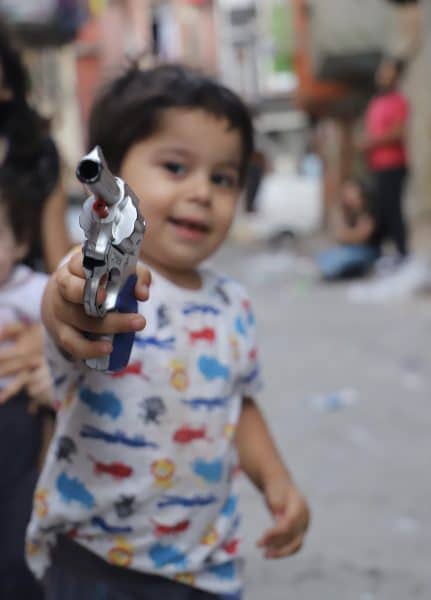
Billed to combat war profiteers, the tax was drawn up by an anonymous special commission and designed to hit Turkey’s non-Muslims where it hurt the most. To be paid immediately in cash, it assessed Armenian property at 232 percent of its real value, Jewish at 179 percent, Greek at 159 percent, and Muslim at 5 percent. Those who couldn’t pay in several days’ time had their property expropriated and head of household shipped to a forced labor camp in eastern Anatolia, where their chance of survival was slim. As Prime Minister Mehmet Şükrü Saracoğlu, the architect of the tax, put it bluntly at the time: “This is a law of revolution [to] eliminate the foreigners… and give the Turkish market to the Turks.”
September Days
While the 1942 Wealth Tax encouraged most of Istanbul’s Jewish population to emigrate to Israel after 1948, most Rum still remained. Their day would come a decade later. When the childhood home of Ataturk in Thessaloniki was ‘bombed’ in September 1955 (the handiwork of Turkish intelligence), broadsheets such as Istanbul Ekspres, which printed 14 times its usual afternoon run, whipped the masses into a frenzy.
Bussed into Istanbul in advance from inner Anatolia, thousands of rioters lay ready to destroy every minority-owned business, home, or place of worship in sight. By the time the dust cleared on September 7, 1955, 5,317 businesses, 4,214 houses, 1,004 offices, 73 churches, 26 schools, one synagogue, and one monastery had been destroyed. Istanbul’s Kristallnacht left a trail of devastation from which Tarlabaşı would never recover.
The timing, however, was propitious. For a city whose population nearly quintupled from 983,000 in 1950 to 4.4 million by 1980, the need for housing was acute. After all, rather than proceed with land reform across Anatolia, as the previous government had set out to do, Ankara’s postwar American advisors had encouraged the government of Adnan Menderes to accept vast amounts of Marshall Aid for agricultural equipment, which in turn rendered millions of peasants redundant.
Thrown off the land, at least their path to the city was open. For that other great American initiative, the paving of highways across Anatolia, was nearly complete. A critical cold war ally, with luck before long they’d build a ‘little America’ along the Euphrates.
The poisoned princess
Wracked by the Kurdish struggle for independence in the southeast, a booming Afghan opium trade powered by the mujahedeen, and general social-political meltdown around Turkey, by the 1980s Tarlabaşı’s plentiful housing stock had made it the most notorious neighborhood in Istanbul.
Refuge of Gypsies, Kurds, West Africans, dealers, and sex workers squatting in stately abandoned Greek townhomes, Tarlabaşı was the antithesis of the dollar-loving, God-fearing Turkey of the time. Claiming, somewhat rightfully, that it didn’t “represent our Turkish culture,” when Bedrettin Dalan became mayor of Istanbul in 1984, he set his sights on curing “Istanbul’s poisoned princess.” Dreaming of razing the neighborhood to replace it with motorways and high-rises, Dalan had to settle for Tarlabaşı Boulevard, a six-lane thoroughfare smashing through the heart of Istanbul’s most fragile urban ecology and severing it from the rest of old Beyoğlu.
When the AKP came to power two decades later, it was of a similar mind. Embarking upon Turkey’s largest ‘urban renewal’ project in half a century, the AKP-led municipal government decided that Tarlabaşı, that colorful haven of heathendom, be the first to go. Cutting public services, they pursued every trick in the gentrifier’s book before passing the infamous ‘Tarlabaşı Urban Renewal Law’ in 2006.
Nine square blocks were designated for ‘renewal’ and some 278 historic buildings demolished to prime it for a ‘public’ tender eventually won by Çalık Holding, whose CEO was Berat Albayrak, son-in-law of President Erdoğan.
Though the project has been stalled on three separate occasions by Turkey’s Danıştay, or Council of State, the construction of Çalık’s sprawling mixed-use mantlepiece, Istanbul 360, is nearing completion.
The contemporary scene
In the midst of this frustrating social, legal, and infrastructural limbo, a great potpourri of people still calls the neighborhood home. More than anywhere else, Tarlabaşı embodies the strengths and weaknesses of rising Istanbul: on the one hand, it is wracked by violence, exploitation, precarity, pollution, poor public services, and a complete lack of green space. On the other, however, it’s a minor paradise: beautiful, diverse, historic, affordable, cosmopolitan, unpretentious, full of solidarity, and smack in the heart of Eurasia’s greatest city. It’s even mildly come to resemble its glory days, only instead of poets, pastry chefs, and cabaret singers, it harbors many of the Queen City’s rising artists, photographers, programmers, and architects.
More importantly, it’s still Istanbul’s greatest place of refuge. Whether for Ahmed, the Egyptian economist with a vegetable stand in Tarlabaşı’s Sunday market; Mack, the Ghanaian barber and amateur footballer; Dawud, the Iranian engineer en route to Europe; or Aliya Goga, local head of the HDP who fled the southeast after her Turkish-Armenian village was destroyed by the army in the 1980s, Tarlabaşı has given them what nowhere else in Turkey would.
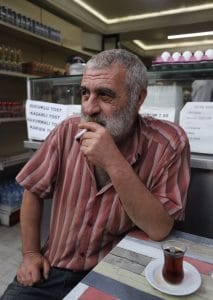
For Sedat, however, there’s no question of leaving. Arriving in Tarlabaşı from Kars, a cold outpost on the Armenian border, in the early 1960s, Sedat has been selling trinkets under the boulevard overpass for two decades. Ensconced at his favorite teahouse, I ask if he ever visits relatives who’ve left for newer parts of town. “Isn’t that what phones are for?”
No, he says, I don’t care to leave Tarlabaşı. In his building alone, he claims, are people from all 81 of Turkey’s provinces. Besides, “Tarlabaşı is freedom.”
References
[1] The mostly Catholic descendants of permanently resident European merchants in the Ottoman Empire.
[2] This illustrious list included Ernest E. Hirsch, the lawyer who wrote Turkey’s still-existent trade law; Alfred Heilbronn, the plant geneticist who founded Istanbul’s Botanical Garden; Ernst Reuter, the renowned communist politician who introduced urban planning in Turkey and later served as the mayor of West Berlin from 1948-1953; Erich Auerbach, the renowned philologist and literary scholar who penned his great masterpiece Mimesis: The Representation of Reality in Western Literature, while in Istanbul; and Bruno Taut, the modernist architect who designed much of Ankara University and is the only non-Muslim to date buried in Istanbul’s Edirnekapı Martyr’s Cemetery.
Cover Photo: Bulent Kilic / AFP
Inside Photos: Evan Pheiffer
Follow us on Twitter, like our page on Facebook. And share our contents.
If you liked our analysis, stories, videos, dossier, sign up for our newsletter (twice a month).



